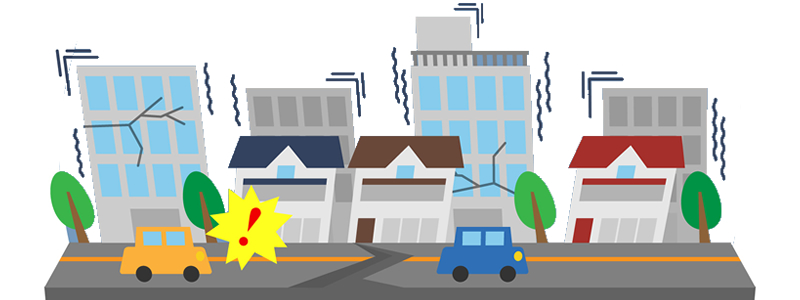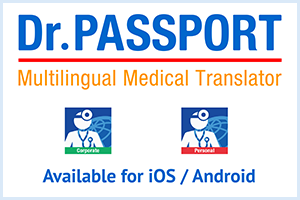Table of Contents
Basic Facts and Disaster Prevention
Earthquake Intensity (Shindo)
When an earthquake occurs in Japan, in addition to the standard magnitude scale a second scale known as Shindo (震度, seismic intensity) is employed. This scale is unique to Japan and measures the degree of shaking caused by the quake. Earthquakes are rated weakest to strongest, from 0 to 7, and earthquakes of Shindo 5 or above are further divided into ‘Lower’ or ‘Upper’ subcategories (i.e., “Lower 5,” “Upper 5” etc.), for a total of 10 levels. The Great Hanshin Earthquake in 1995 and the Tohoku Earthquake in 2011 both measured 7 at areas where it shook the most (the Tohoku Earthquake was experienced as a 5 Upper in Tokyo). Magnitude and Shindo scales do not correspond to each other.
Preparations
EARTHQUAKE PREPARATION
When an earthquake strikes, it is important to take cover in a calm and orderly manner.
Please refer to the following information to prepare earthquakes.
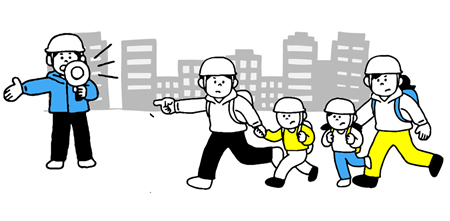
PREPARATION WHEN YOU ARE AT HOME
Do not go outside while the house is still shaking. It is extremely dangerous because you may fall or be struck by falling objects. Until shaking stops, please take shelter under a desk or table and protect firstly your head.
When the shaking stops, secure an escape route by opening doors and windows.
The gas supply will stop automatically when a big earthquake strikes. If you are using an open flame at that time, move away from the flame. Extinguish the flame after shaking has stopped.
When sleeping:
Please use a pillow or blanket to protect your head and body. If you can get under your bed, take shelter there until shaking stops.
In the bathroom:
Please open the door as soon as possible to prevent yourself from being trapped.
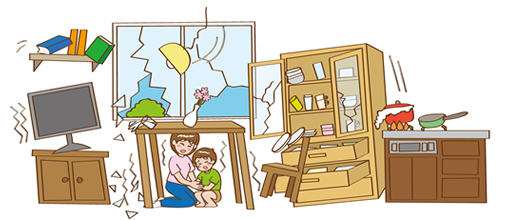
PREPARATION WHEN YOU ARE OUTSIDE
Use a bag or coat etc. to protect your head and crouch low while waiting for shaking to stop.
In an elevator:
It is common that elevators stop automatically during a major earthquake. Press buttons for every floor and get off anywhere it stops first.
If the door will not open, use the interphone to call for help and follow the instructions.
In a car:
Turn on the hazard lights and gradually reduce your speed. Park the car to the left side of the road and wait for shaking to stop. If you evacuate by leaving your car, leave it in a state where it can be moved so that emergency vehicles can pass through. Leave the doors unlocked with the keys inside and leave a note with your contact details. Take any valuables and vehicle verification with you.
Walking down the street:
Move away from walls and glass windows. If you are in an area with many high-rise buildings or very old buildings, move to an open area such as parks.
In a train station:
Stay far from the edge of the platforms so that you do not fall onto the tracks. When shaking stops, follow the instructions of the station staff.
In a supermarket or convenience store:
Protect your head with a bag or a shopping basket and crouch low until shaking stops because products may fall from shelves.
In the underground mall:
It is too dangerous when a group of panicked people rush to an exit.
Please be extra careful if there are power outages in the underground. Crouch low and wait for shaking to stop beside a wall or pillar. When shaking has stopped, keep one hand touching a wall so that you do not lose your way as you make your way outside.
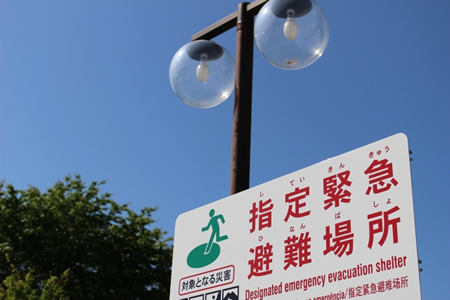
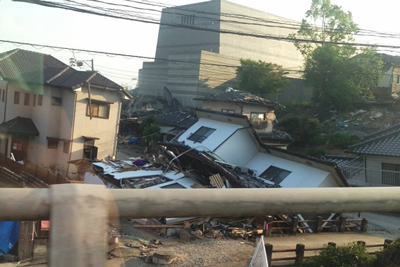
【Cooperating with Others】
When evacuating, reach out to the people around you to make sure they are safe.
Make sure no one is trapped under fallen objects, injured, or unable to make it outside.
When helping, please approach others to assist you. If you are not sure about what to do, please ask those who are around you.
During a disaster, it is especially important that everyone works together.
It is very nice to be good neighbors each other on a daily basis saying hello every day to help with these.
【After an Earthquake】
What to do after shaking subsides
Confirm whether your current location is safe or not.
Ensure the place you are in is not at risk from a tsunami or building collapse, and that no fires have started. If the location is not safe, evacuate swiftly.
Confirm the safety of your family. Decide a communication method in advance. For details, please see the following page:
Emergencies | The Expat’s Guide to Japan – Part 4 (expatsguide.jp)
If you cannot stay in your home, evacuate in a calm manner. For details, please refer to your local government website.
For Tokyo: Evacuation Centers & Evacuation Sites|Tokyo Metropolitan Government Disaster Prevention Website (j-server.com) ☆Click “English” or other language buttons for the translation, please.
If you are outside, remain in a safe location for a while.
Check the current situation – whether trains are running, if streets are passable, whether any fires have broken out near your home, etc.
What occurs after a major earthquake?
Even after the shaking stops, it is common for further earthquakes to follow. It is said Yoshin (aftershocks) in Japanese.
Tsunamis may strike coastal areas.
Major fires may break out.
Train and bus services may stop.
Major roads may be closed to normal cars so that emergency vehicles can pass through.
Gas, electricity, and water services may be suspended.
It may become difficult to connect to the internet or reach people by phone.
